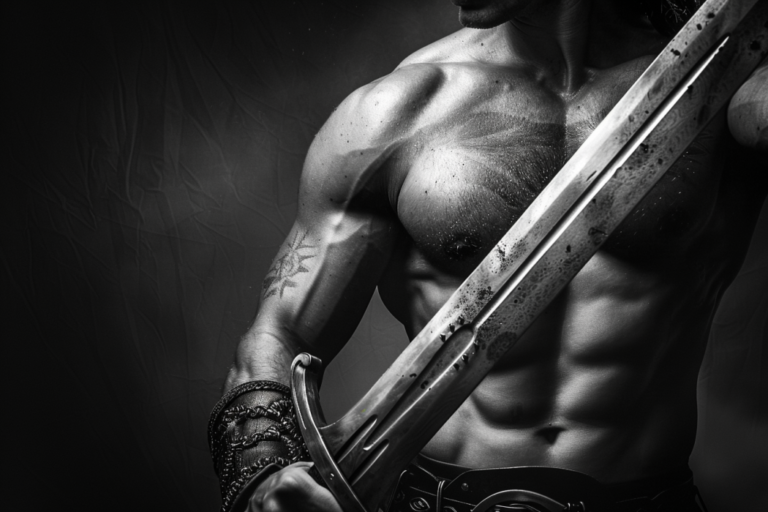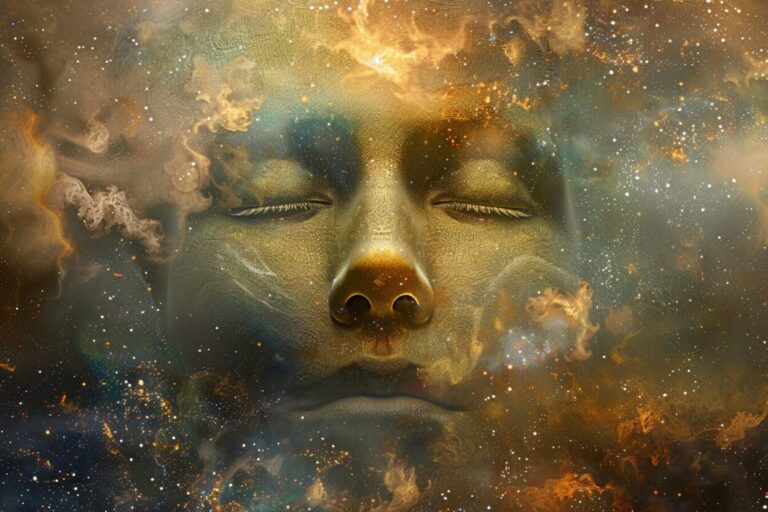Scorpion Symbolism in Cultures and Arts Around The World
Scorpions are more than just fierce little creatures—they’re packed with symbolism. From their deadly sting to their mysterious nature, they’ve become icons of protection, transformation, and survival.
Let’s explore the powerful energy these creatures represent!
Scorpion Symbolism in Asian Culture

In North Africa and South Asia, the scorpion holds cultural significance, appearing in art. In Islamic art in the Middle East, the scorpion symbolizes the Sufi dervishes’ power to vanquish evil. An Afghan folk story tells of a scorpion that crawls into the Prophet’s shoe, grabbed by an eagle, saving the Prophet’s life.
Scorpions are seen as persistent—they don’t flee like snakes. Many cultures have to carefully clean their house to prevent scorpion entry. In South Asia, felt carpets are used since scorpions reportedly avoid fabric, and in North India, cow dung is used as a natural deterrent.
Culturally, scorpions are seen as both embodiments of evil and protective forces against evil. In some cultures, scorpions are associated with human sexuality. In Iran, a scorpion’s bite was considered so venomous that there was a saying about praying for one’s enemy to be stung by a Kashani scorpion. In popular Muslim folklore, particularly dangerous scorpions are said to inhabit hell, serving as protectors against evil.
Scorpion Symbolism in Egyptian Mythology

In ancient Egypt, scorpions held significant cultural and mythological importance. They were frequently depicted in tombs and monuments and mentioned in ancient texts such as the Ebers papyrus and the Book of the Dead. The ancient Egyptians venerated the scorpion, using it as a symbol in names, nomes, and as a representation of the goddess Serqet.
The goddess Serqet, deified by the ancient Egyptians, was considered a protector of the dead, safeguarding their bodies and viscera in the afterlife. Physicians in ancient Egypt, particularly from the 5th dynasty onward, were given titles like “Follower of Serqet,” indicating their proficiency in handling scorpion venom. Medical prescriptions and magical spells were employed to treat scorpion stings.
There is also the Myth of Isis and the Seven Scorpions. After her husband Osiris was murdered by his jealous brother Set, Isis fled to the marshes of the Nile Delta, searching for a safe place to hide her son, Horus. Horus was destined to avenge his father and claim his rightful place as ruler of Egypt, but as an infant, he was vulnerable to Set’s attempts to harm him.
To protect herself and her child, Isis was accompanied by seven magical scorpions: Tefen, Befen, Mestet, Mestetef, Petet, Thetet, and Matet. These scorpions acted as her fierce guardians, ready to defend her with their venom.
One day, Isis arrived at the gates of a wealthy woman’s house and asked for shelter. The woman, fearing the scorpions, refused her entry. Offended by the woman’s selfishness, the scorpions united their venom into a single, deadly sting and sent it into the wealthy woman’s child. The child fell gravely ill, and the woman was consumed with grief.
Despite being rejected, Isis, in her divine wisdom and compassion, took pity on the woman. She recited powerful spells to counteract the venom, healing the child. The wealthy woman, overcome with gratitude, repented her actions and offered Isis everything she had, including gold and provisions for her journey.
Scorpion Symbolism in Hinduism
In Hinduism, scorpions are symbolic and have multifaceted associations within the rich tapestry of Hindu mythology, religious beliefs, and cultural practices.
In Hindu astrology, certain zodiac signs are associated with specific animals, and the scorpion is represented in the zodiac as the eighth sign, known as Vrishchika or Scorpio. Astrology plays a significant role in Hindu culture, guiding various aspects of life, including marriage, naming ceremonies, and daily activities.
Chelamma is a Hindu goddess worshipped in the Southern Karnataka region of India, particularly in Kolar, where she is revered alongside Kolaramma. She holds a unique position as a Scorpion goddess, and devotees believe that by offering prayers at the Chelamma shrine, they gain protection from scorpion bites and certain diseases, reinforcing her role as a guardian deity.
An interesting aspect of the Chelamma shrine is the ancient hundi, a receptacle for offerings, that has been in existence for over a millennium. It is said to be carved into the ground, and people have been placing gifts or Kanike in it for the past 1,000 years. Notably, the hundi remains unopened, with a legendary belief that it contains precious stones and gold coins from ancient times.
Read More: Trident Symbolism Across The World
Scorpion Symbolism in Mesopotamian Mythology

In Mesopotamian mythology, particularly in Babylonian and Akkadian traditions, there were creatures known as aqrabuamelu or girtablilu. These beings were depicted as part human and part scorpion, often with a human head and torso but a scorpion tail. They were associated with the gates of the Land of Darkness and were considered as powerful and formidable guardians.
The Land of Darkness, in Mesopotamian myth, was a mysterious and perilous realm often associated with the underworld or the afterlife. The aqrabuamelu were tasked with guarding the entrance to this land, preventing unauthorized entry. These hybrid creatures are just one example of the diverse and intricate mythologies that existed in the ancient cultures of Mesopotamia.
General Scoprion Symbolism
1. Protection

Scorpions have long been seen as symbols of protection, with roots in ancient myths and cultural beliefs. In Egyptian mythology, the goddess Serqet was tied to scorpions, seen as divine protectors warding off evil spirits. Their venomous stingers and ability to thrive in harsh environments only added to their reputation as resilient guardians.
Beyond Egypt, scorpions are seen as protectors in Middle Eastern cultures, believed to safeguard homes and ward off harm. Even their role as natural pest control, keeping insect populations in check, reinforces their image as fierce yet beneficial defenders. These creatures embody resilience, adaptability, and the power to protect.
Read More: Crow Symbolism And its Meaning
2. Transformation

Scorpions are deeply tied to transformation, and it all starts with their life cycle. When a scorpion molts—shedding its exoskeleton to grow—it’s like a tiny rebirth. This process symbolizes renewal and evolution, as the scorpion emerges stronger and ready to face the world in its new form. It’s a powerful reminder that growth often means letting go of the old to make space for the new.
In Greek mythology, the scorpion is associated with the story of Orion, a hunter who was stung and killed by a giant scorpion. The gods then placed both Orion and the scorpion in the night sky as constellations, emphasizing the transformative nature of this celestial event.
Read More: Symbols of Growth Around The World
3. Astrological Significance

In astrology, the Scorpio sign is ruled by Pluto, the planet of transformation and power, and Mars, the planet of passion and drive. This dual influence gives Scorpio a mix of raw intensity and strategic focus. It’s the archetype that seeks to uncover the hidden, whether that’s buried emotions, secret knowledge, or life’s deeper meaning. It thrives on diving beneath the surface to understand what lies beneath.
Emotionally, the Scorpio archetype is deeply passionate and fiercely loyal but guarded. It craves deep, meaningful connections and fears betrayal, which can sometimes lead to an air of mystery or secrecy. But once trust is earned, Scorpio energy is unwavering, offering a rare depth of love and devotion.
Scorpios are also closely associated with transformation and rebirth. Much like the mythical phoenix rising from the ashes, Scorpios experience profound life changes, emerging from challenges and setbacks with newfound strength and wisdom. This transformative aspect is linked to the influence of Pluto, the modern ruler of Scorpio.
Read More: Symbols of Resilence Around The World
4. Death and Danger

Scorpions have a reputation for danger and mystery, thanks to their venomous tails and stealthy habits. While most scorpions aren’t harmful to humans, a few species can deliver a sting that’s seriously powerful—sometimes even deadly.
Their sharp, curved stingers and nocturnal ways only add to their edgy image. Scorpions hide in shadows by day and emerge at night, moving with a quiet precision that feels almost otherworldly. They’re the kind of creatures that keep you on your toes—deadly, resilient, and wrapped in an aura of fear and fascination.
Read More: 30 Symbols of Death in Cultures Around The World
5. Balance

In Chinese philosophy, Yin and Yang symbolize the balance of opposites, and the scorpion embodies this beautifully. Its venomous sting (Yang) contrasts with its role in pest control and ecological balance (Yin), showing how life is a blend of harm and healing.
Scorpion venom itself is a paradox—it can be deadly, yet it holds the potential for groundbreaking medicinal uses. This duality reflects the idea that even things capable of harm can also bring healing, reminding us that life’s contrasts are deeply interconnected, each side giving meaning to the other.
Read More: Symbols of Harmony in Arts and Culture
6. Betrayal
There is a story in Arabian folklore that perfectly represents this symbolism. Once upon a time, there was a big flood. A scorpion, scared of the rising water, met a turtle and asked for help. The turtle, being strong and kind, agreed to carry the scorpion on its back. The scorpion promised not to hurt the turtle.
As they journeyed through the flood, the turtle trusted the scorpion, even though it felt a bit unsure. The scorpion said, “Don’t worry, dear turtle. I won’t hurt you. We’ll get through this together.”
But when they reached what seemed like safety, the scorpion stung the turtle with its poisonous tail. The turtle, feeling betrayed, couldn’t survive the venom. Both the scorpion and the turtle were lost in the flood.
Read More: Skull Symbolism in Art and Culture
7. Healing
Scientists have been studying the unique components of scorpion venom for their potential medical applications. Certain peptides and proteins in the venom have demonstrated antimicrobial and anticancer properties. Researchers are exploring these compounds to develop new drugs and treatments.
Some studies suggest that specific toxins in scorpion venom may even have analgesic (pain-relieving) properties. By understanding and isolating these components, researchers aim to develop pain medications that could be more effective and have fewer side effects than existing options.
Read More: Symbols of Forgiveness Around The World







